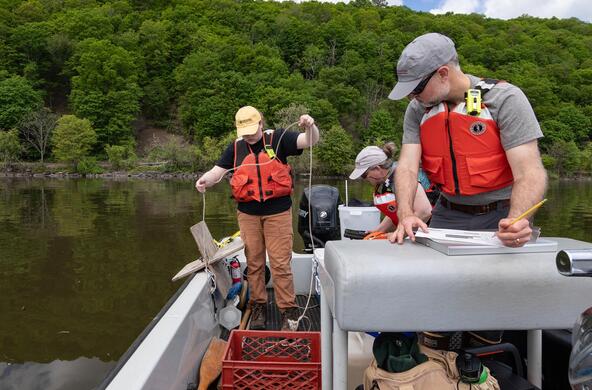- Profile
- Past Projects
- Publications
David Fischer manages Cary Institute's Hudson River research program which included routine monitoring of the pelagic and benthic communities from Troy to Haverstraw as well as a number of more focused short term studies of the many habitats and communities associated with the river ecosystem. He is also involved in collaborative efforts with NYSDEC including HRECOS river monitoring stations and a citizen science research program monitoring submerged aquatic vegetation (SAV) in the estuary.
In addition David is now a member of the Cary science education team.





